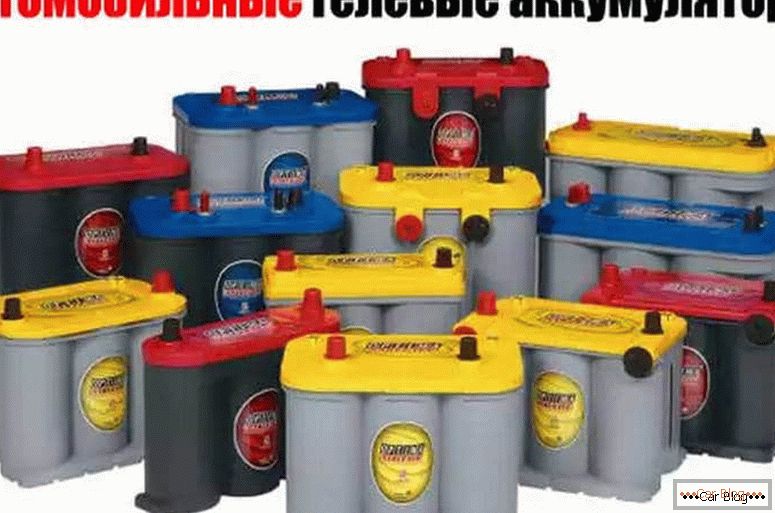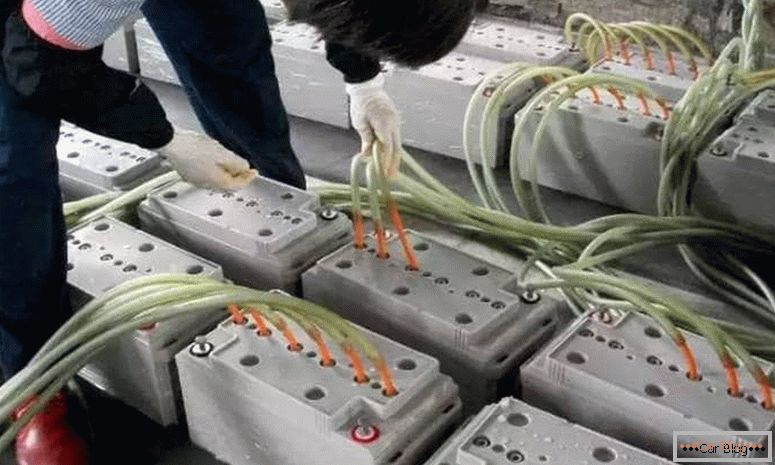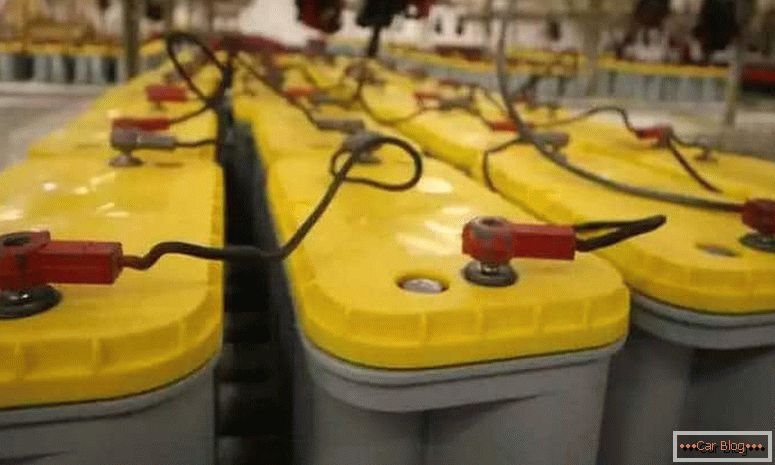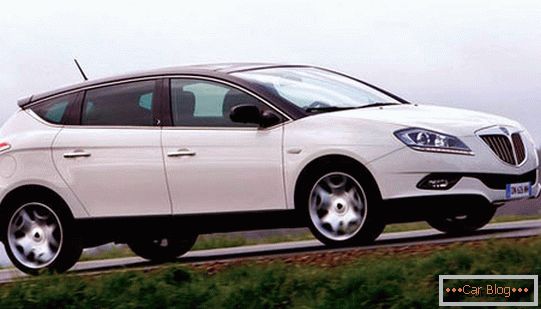Cars that are produced today are significantly different from their predecessors even ten or twenty years ago. Automakers regularly make improvements in many nodes and systems, and the electrical part of the machine is no exception.
Since the battery is responsible for the quality start of the motor, it goes through various stages of its evolution, increasing the volume and adapting to different working conditions. One of the new products in this market is batteries, which are based on gel instead of traditional liquid. Tell about the gel battery, the pros and cons of its operation.
Content
- 1 Internal device
- 2 AGM
- 3 GEL
- 4 Pros / Cons
- 5 Charging specificity
Internal organization
Externally, the device has all the classic signs of a battery. A pair of terminals and a cavity in which chemical components interact. However, unlike the popular acid-base batteries, a gel-like mass is present in the gel instead of the liquid electrolyte. Reviews of his work can be heard different. There are two types of electrical devices on the market: GEL and AGM. Consider both types of batteries.
AGM
The basis of the restraining material is cotton. Its name is included in the abbreviation of this type: absorbent glass mats. This material encloses an electrolyte in its elements that is impregnated with cotton wool, located in the gaps of lead plates. The electrolytic substance is in a bound state in the cells of the fiberglass separator.

This property allows battery operation in virtually any position in space, even in a horizontal position. No external evaporation occurs, and the electrolyte is protected from leakage and is ready for use for its intended purpose.
A variety of AGM refers to the budget type of construction. Even when it is right to care for him, he will be able to serve on average about 5 ... 6 years. Although there are a number of similar models on the market that have a service life of up to 10 years. It is considered that the development of gel batteries comes after about 200 full charge cycles.
See also: Fuse block VAZ 2114: pinoutThe most active AGM used as a backup source of electricity with discharges that occur rarely. The product behaves comfortably at an ordinary temperature of 15 ... 25WITH. Without allowing long-term deep discharge, and maintaining the temperature regime, one can hope for a long service life.
GEL
A positive feature of this type is the increased resource cycle of charging / discharging. It averages 800 full cycles. In this case, there is no reduction in battery capacity. The gel base of the electrolyte is distributed in the separators between the plates and is a silica gel poured on the production. Subsequently, it is formed into a more solid structure that holds the electrolyte in its pores.
The physico-chemical structure ensures reliable fixation of the plates and keeps them from damage. This property extends the resource for the battery as well allows you to adequately carry a deep discharge, up to 100%.

Among the manufacturers there are companies that establish a warranty period of operation at the level of 7 ... 10 years for the variety GEL. This is justified by the order of 350 complete recharge cycles, which is more than one and a half times higher from AGM. By operating a more advanced technology, the car owner will save on the maintenance and replacement of the failed power supply elements.
On plates of this type, the level of sulfitation is reduced in comparison with budget analogues. The battery will easily transfer even several days with full discharge.
Pros / Cons
Like any other element of the car gel battery has its advantages and disadvantages. After evaluating them correctly, you can make a choice in their favor or, on the contrary, refuse to operate.
Pros:
- the battery provides high starting current;
- there are no possible leaks even in case of damage to the case;
- no need for any type of service;
- works in any physical position, even in the horizontal;
- with high-quality electronics, it can work many times more.
Minuses:
- low degree of resistance to overcharging (it will be necessary to monitor the corresponding indicator in order to properly charge the gel battery);
- loses properties at a substantially low atmospheric temperature;
- has a significantly higher price tag than acid-base analogues;
- forces the installation of additional consumable electronics.

Despite the large number of positive sides, the gel battery poorly tolerates a cold climate. You will also need to equip the car with electronics that control the uniform supply of voltage for charging. Otherwise, all the advantages are leveled.
Charging specificity
Разберемся, how to charge gel battery, ведь его можно достаточно редко встретить под капотом автомобилей на отечественных дорогах. Для данной операции потребуется специальное зарядное устройство. Также не стоит доверять первому попавшемуся сервисному центру, которые может не встречаться с этим типом АКБ и не знать об особой процедуре.
It is important to ensure the maximum allowable voltage supply for charging gel batteries, because if you exceed them, you can ruin the battery permanently.
In most cases, this value is 14.3-14.5 V. This is stated in the instructions for use of the product. Also, an electrical source can be stored in a discharged state. But at the beginning of charging gas will be emitted noticeably, which is absent during the standard mode of operation.

The main characteristics of the charger for gel batteries are as follows:
- the type of device must correspond to gel batteries, because for them a substantially narrow voltage range is applicable, and at higher levels - the electrolyte inside it simply boils away;
- Thermocompensation is required for the charger in order not to cause overcharging and at the same time a significant reduction in the service life;
- Do not allow significant voltage drops.
It is not recommended to use chargers that do not have a clear output, including homemade devices.



